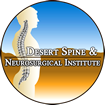- Differential diagnosis of facial pain is fairly extensive and includes common causes such as headache, as well as characteristic cranial neuralgias, such as trigeminal neuralgia.
- The trigeminal nerve, because of its distribution, is the location of a wide variety of pain syndromes. Of these, trigeminal neuralgia is a well-known and relatively common disorder.
- Classically, trigeminal neuralgia pain is localized to one or more branches of the trigeminal nerve and is characterized by sharp, lancinating, electric-shock-like pain occurring as a brief episode that lasts several seconds, with pain-free intervals between attacks.
- These attacks are initiated by stimulation of a so-called trigger zone, or they may start spontaneously without obvious provocation. Early on, the disorder may involve periods of pain remission that can last for years.
- The exact nature of the mechanism of trigeminal neuralgia remains unknown; however, it is generally accepted that focal demyelination in the root of the trigeminal nerve is involved in the pathogenesis.
- The diagnosis of classic trigeminal neuralgia also assumes preservation of the function of the trigeminal nerve, with mild hypesthesia in a minority of cases.
- Perhaps the most important feature of facial pain that labels it as trigeminal neuralgia is its unequivocal improvement with an anticonvulsant such as carbamazepine, gabapentin, or phenytoin. This response to carbamazepine can be helpful in differentiating trigeminal neuralgia from other orofacial pain.
- Advanced imaging can in most cases identify the vessel which is pressing on the trigeminal nerve and causes the symptoms of trigeminal neuralgia.
- This knowledge becomes prudent in surgical approach to the treatment of trigeminal neuralgia.
Treatment of trigeminal neuralgia is broadly divided into two categories:
1- Destructive treatment:
- Radiofrequency Rhizotomies
- Balloon Gangliolysis
- Stereotactic Radiosurgery (ie Gamma Knife)
The possible complication of destructive treatment is facial numbness, neuroparalytic keratitis, or the sever complication of anesthesia dolorosa which is a more complex facial pain.
2- Non destructive treatment:
- Medical treatment (Tegretol, Baclofen, Dilantin, etc.)
- Microvascular decompression (with initial success rate of 85 to 95%)
The possible complication of non destructive treatment is side effect of medication and risk of surgery.
Trigeminal Neuralgia Case Presentation:
Here a patient with facial pain was diagnosed with trigeminal neuralgia. Using a special sequence MRI mapping of her trigeminal nerve and adjacent vascular structures, left superior cerebellar artery was found to be impinging on her trigeminal nerve.
